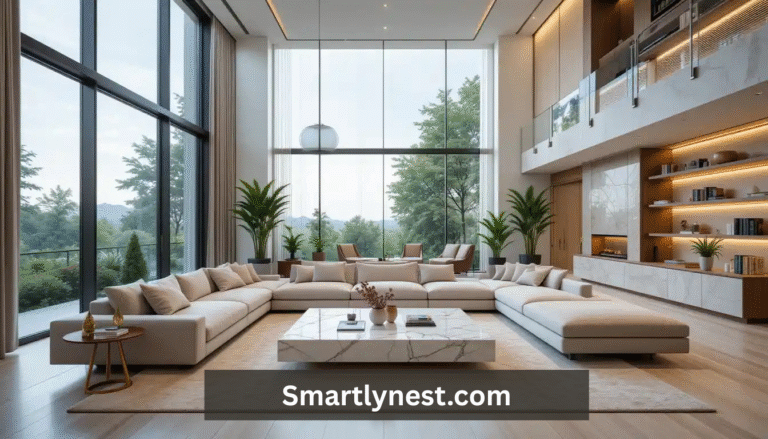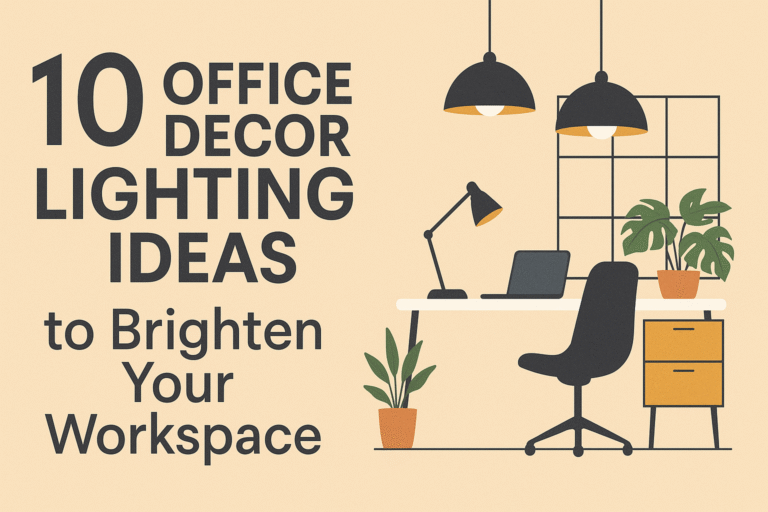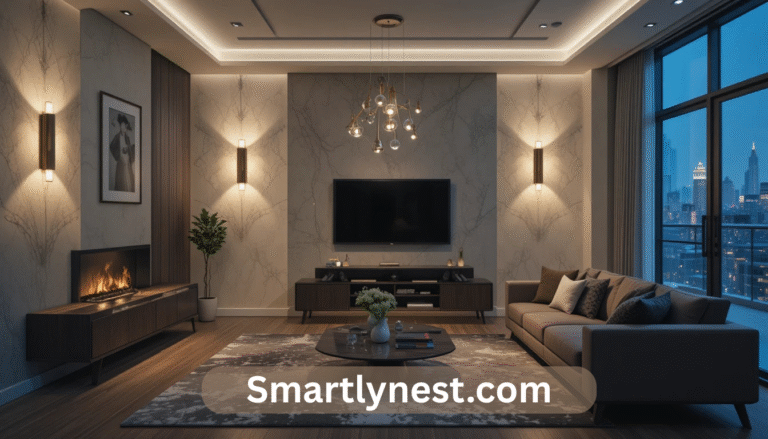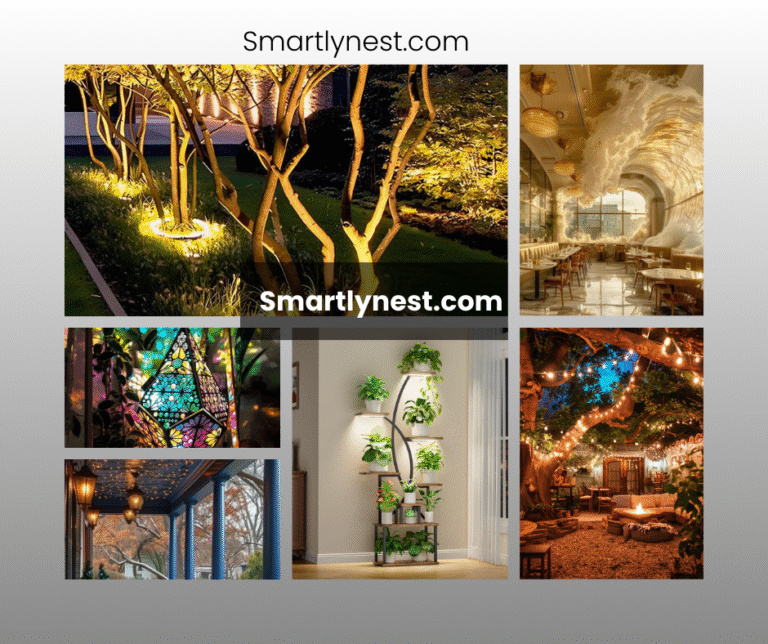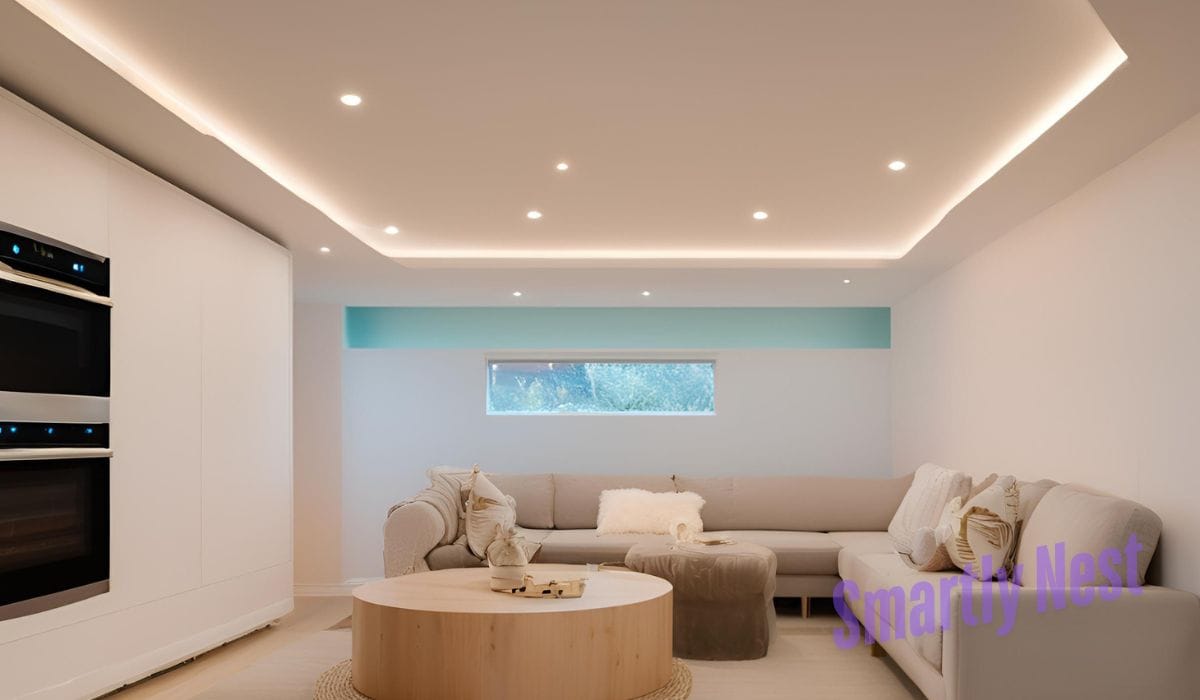
Cove lighting is one of the most elegant and functional lighting techniques available today. Often used to create a soft, ambient glow, it has the power to dramatically transform the look and feel of a room. Whether used to enhance architectural features, provide task lighting, or simply create an inviting atmosphere, cove lighting is both versatile and stylish. In this comprehensive guide, we’ll explore how you can use cove lighting to elevate your home, from understanding its benefits to installation tips and maintenance.
Introduction to Cove Lighting
Cove lighting refers to a form of indirect lighting where fixtures are hidden in architectural features such as ledges, recesses, or valances in ceilings or high walls. The light is directed upward towards the ceiling and sometimes down the walls, creating a soft and diffused light. This indirect lighting method is commonly used in modern interior design because it enhances a room’s aesthetic without overwhelming it with harsh direct lighting.
Cove lighting can be installed in a wide range of spaces, including living rooms, kitchens, bathrooms, and hallways, making it a versatile solution for any area of the home. The beauty of cove lighting lies in its ability to provide even, gentle illumination that doesn’t compete with other light sources in the room.
What Makes Cove Lighting Different?
Unlike traditional lighting methods, such as overhead lights or lamps, cove lighting is designed to minimize glare and create a calming, ambient glow. It achieves this by reflecting light off the ceiling, creating an even distribution that is easy on the eyes. This results in a well-lit space that feels inviting and warm.
Benefits of Cove Lighting
Cove lighting offers a number of benefits, ranging from its aesthetic qualities to its energy-saving capabilities. Here’s a closer look at how this lighting technique can enhance your living spaces:
1. Aesthetic Enhancement
Cove lighting is one of the most effective ways to add sophistication and charm to a room. It works wonders for highlighting architectural features such as crown molding, recesses, and shelves. This subtle type of lighting allows you to bring attention to certain aspects of the room without being intrusive.
- Highlights design elements: Whether it’s a textured ceiling, a grand bookshelf, or a beautiful feature wall, cove lighting can emphasize specific areas of a room, enhancing its overall aesthetic.
- Softens the atmosphere: Traditional overhead lighting can often create harsh contrasts and shadows, but cove lighting produces a gentle, ambient glow that softens the room’s atmosphere.
2. Energy Efficiency
One of the main advantages of using cove lighting is its energy efficiency, especially when paired with LED bulbs. LED lights consume much less energy than incandescent bulbs and have a much longer lifespan, making them a more eco-friendly option.
- Lower energy consumption: LED strips or panels used in cove lighting are energy-efficient and can help reduce your electricity bill.
- Long lifespan: LEDs can last up to 50,000 hours, meaning they need to be replaced much less frequently compared to other lighting options.
3. Reduced Glare
Direct lighting can cause intense glare, especially in rooms with large windows or glass surfaces. Cove lighting, on the other hand, minimizes this problem by using indirect light. The light is reflected off the ceiling, creating a soft, diffused effect that doesn’t cause discomfort or eye strain. This makes it ideal for living rooms, bedrooms, and spaces where people spend extended periods of time.
4. Increased Property Value
Cove lighting can add value to your home by improving its aesthetics and functionality. Many buyers are drawn to homes that have unique and visually appealing features. The installation of cove lighting can create a luxurious feel in any room, which could make your property more desirable to potential buyers.
- Stylish appeal: Potential buyers appreciate homes with thoughtful design elements, and cove lighting is seen as a modern, high-end feature.
- Elevates a home’s atmosphere: A well-lit home with subtle lighting techniques like cove lighting can make spaces feel more spacious and welcoming, which can influence a buyer’s perception of a property.
Design Ideas for Incorporating Cove Lighting
Cove lighting is versatile and can be used creatively in different parts of your home. Whether you want to create a cozy atmosphere or highlight a feature, there’s a perfect application for cove lighting in every room.
1. Living Rooms
In the living room, cove lighting can be used to accentuate the room’s design elements, such as crown molding, alcoves, and built-in shelving. Installing LED strips along the perimeter of the ceiling can help create an ambient glow, enhancing the overall warmth and charm of the room.
- Highlight a fireplace or TV area: If your living room has a fireplace or a media area, cove lighting can be used to draw attention to these features without the need for harsh task lighting.
- Create a focal point: Use cove lighting to highlight artwork, photographs, or furniture pieces, adding depth and dimension to the space.
2. Bedrooms
In the bedroom, soft, ambient lighting is essential for creating a relaxing environment. Cove lighting can be installed behind the headboard to create a gentle, warm glow that makes the room feel more intimate and peaceful.
- Behind headboards: Mounting cove lighting behind the headboard can provide a subtle light source perfect for reading or unwinding.
- Soft bedside lighting: Use cove lighting to create an inviting atmosphere that encourages relaxation without the harshness of traditional bedside lamps.
3. Kitchens
In kitchens, cove lighting can be used to illuminate work areas, enhance the overall ambiance, and highlight specific features like countertops and cabinets. Installing cove lighting above cabinets can provide both practical task lighting and a decorative touch.
- Task lighting above counters: Placing LED strips above countertops provides ample lighting for food preparation and cooking.
- Accent for cabinetry: Cove lighting can highlight the beauty of your kitchen cabinets, especially if they have intricate designs or textured finishes.
4. Bathrooms
Cove lighting is ideal for bathrooms, especially in spaces like showers or around bathtubs. Installing recessed cove lights around the shower area can create a spa-like atmosphere, making it feel more luxurious and relaxing.
- Around mirrors and vanities: Cove lighting around the vanity area can provide soft lighting that is flattering for makeup application or grooming.
- Shower and bathtub area: Use cove lighting around bathtubs or shower stalls to enhance the spa experience, giving the room a soothing, tranquil vibe.
5. Hallways and Staircases
Hallways and staircases can benefit from cove lighting, especially in areas that don’t receive enough natural light. Installing cove lighting along the top of the walls can provide an elegant solution for these transitional spaces while also adding safety by illuminating the way.
- Subtle lighting for corridors: In narrow hallways, cove lighting can make the space feel larger and more open by casting light on the walls and ceiling.
- Safety and visibility in staircases: Illuminate the edges of staircases with recessed cove lighting to improve visibility and prevent accidents.
Types of Cove Lighting
There are several types of lighting options that can be used in cove lighting installations. Each type has its own advantages and is suitable for different applications, depending on the desired effect.
1. LED Strip Lights
LED strip lights are the most popular option for cove lighting due to their energy efficiency, versatility, and long lifespan. These flexible strips can be easily installed in most cove designs and are available in various color temperatures, allowing you to customize the lighting to suit your needs.
- Easy installation: LED strips are relatively easy to install, especially in smaller cove designs.
- Customizable options: Available in different colors, dimming options, and lengths, LED strips allow for high flexibility in design.
2. Fluorescent Tubes
Fluorescent tubes are another traditional option for cove lighting. While they are energy-efficient, they offer less control over light intensity and color compared to LEDs.
- Long-lasting: Fluorescent tubes have a longer lifespan than incandescent bulbs but may not be as efficient or adaptable as LED strips.
- Bright, consistent light: They provide uniform, bright lighting but can be bulkier and less flexible than other options.
3. Fiber Optic Lighting
Fiber optic lighting is a premium option for creating dramatic, starry effects or unique lighting designs. Although it is more expensive, fiber optics provide a distinctive look and are ideal for accent lighting and decorative features.
- Premium effect: Fiber optic lights can be used to create effects like starry ceilings or intricate designs on walls.
- Requires professional installation: Due to its complexity, fiber optic lighting often requires professional installation and can be more costly.
Installation Considerations
1. Planning and Design
Before diving into installation, careful planning and design are crucial for ensuring the success of your cove lighting project.
- Measure your space: Take precise measurements of your room and determine where the cove lighting will go. Whether it’s along the perimeter of the ceiling or highlighting specific areas, plan the layout accordingly.
- Consider lighting placement: Think about where the light will be most effective—be it near architectural details, furniture, or walls that you want to accentuate.
2. Choosing the Right Materials
The materials you choose for your cove lighting installation will significantly impact both the lighting effect and the overall look of your room.
- Reflective surfaces: Using reflective materials such as polished metal or glossy finishes will enhance the light’s intensity.
- Matte finishes: Matte finishes create a softer, more diffused light that may be more appropriate for living spaces.
3. Professional vs. DIY Installation
While DIY installation is possible, especially with LED strips, consulting a professional can ensure optimal placement and functionality. Professionals can also help with selecting the right materials and lighting options for your space.
- DIY options: If you’re comfortable with electrical work, you can install LED strips or fixtures yourself.
- Professional installation: For more complex setups, especially involving fluorescent tubes or fiber optics, hiring a professional ensures a smooth and safe installation process.
Maintenance and Care
To keep your cove lighting in optimal condition, regular maintenance is necessary.
1. Cleaning and Upkeep
Regular cleaning of light fixtures and surrounding areas ensures that your cove lighting continues to perform at its best.
- Dust regularly: Dust can accumulate on the lights, reducing their effectiveness and brightness. Clean the fixtures regularly with a soft cloth.
- Check for loose connections: Ensure that all wiring and connections are secure to prevent flickering or malfunction.
2. Troubleshooting Common Issues
While cove lighting is generally reliable, occasional issues may arise. Common problems include flickering lights, dimming, or uneven light distribution.
- Check for loose wiring: Ensure that the wiring is properly connected, as this can cause flickering.
- Replace bulbs as needed: If your lights start to dim, it may be time to replace the bulbs or LED strips.
Frequently Asked Questions (FAQ)
What are the best types of light bulbs for cove lighting?
LED bulbs are the best choice for cove lighting due to their energy efficiency, long lifespan, and ability to provide customizable light colors.
Can cove lighting be installed in any room?
Yes, cove lighting can be installed in virtually any room, including living rooms, kitchens, bathrooms, and hallways. The key is planning the layout carefully to ensure it enhances the room’s design.
How can I make my cove lighting more energy-efficient?
Use LED bulbs instead of incandescent or fluorescent lights, as they consume significantly less energy and have a longer lifespan.
What is the cost of installing cove lighting?
The cost of cove lighting varies based on the size of the room, the type of lighting used, and whether you opt for professional installation. Expect to spend anywhere from $500 to $3,000 or more.
Conclusion
Cove lighting is a powerful tool for transforming any space in your home. With its ability to provide ambient illumination, highlight architectural features, and enhance the overall atmosphere, it’s no wonder that this lighting technique is so popular. Whether you’re looking to add a touch of elegance to your living room or create a calming retreat in your bedroom, cove lighting offers endless possibilities. With careful planning and the right materials, you can create a lighting scheme that brings your home to life.

